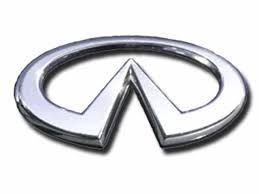M35x AWD V6-3.5L (VQ35DE) (2007)
/Page-1817001.png)
Refrigerant: Technician Safety Information
Precautions For Working With HFC-134a (R-134a)
Precautions for Working with HFC-134a (R-134a)
CAUTION:
-
CFC-12 (R-12) refrigerant and HFC-134a (R-134a) refrigerant are not compatible. If the refrigerants are mixed and compressor
malfunction is likely to occur, refer to "CONTAMINATED REFRIGERANT". To determine the purity of HFC-134a (R-134a) in the
vehicle and recovery tank, use Refrigerant Recovery/Recycling Recharging equipment and Refrigerant Identifier.
-
Use only specified lubricant for the HFC-134a (R-134a) A/C system and HFC-134a (R-134a) components. If lubricant other than that
specified is used, compressor malfunction is likely to occur.
-
The specified HFC-134a (R-134a) lubricant rapidly absorbs moisture from the atmosphere. The following handling precautions must be
observed:
-
When removing refrigerant components from a vehicle, immediately cap (seal) the component to minimize the entry of moisture from
the atmosphere.
-
When installing refrigerant components to a vehicle, never remove the caps (unseal) until just before connecting the components.
Connect all refrigerant loop components as quickly as possible to minimize the entry of moisture into system.
-
Only use the specified lubricant from a sealed container. Immediately reseal containers of lubricant. Without proper sealing, lubricant
will become moisture saturated and should not be used.
-
Never allow lubricant (Nissan A/C System Oil Type S) to come in contact with styrene foam parts. Damage may result.
General Refrigerant Precautions
General Refrigerant Precautions
WARNING:
-
Avoid breathing A/C refrigerant and lubricant vapor or mist. Exposure may irritate eyes, nose and throat. Remove HFC-134a (R-134a)
from the A/C system, using certified service equipment meeting requirements of SAE J-2210 [HFC-134a (R-134a) recycling equipment],
or J-2209 [HFC-134a (R-134a) recovery equipment]. If accidental system discharge occurs, ventilate work area before resuming service.
Additional health and safety information may be obtained from refrigerant and lubricant manufacturers.
-
Never release refrigerant into the air. Use approved recovery/recycling equipment to capture the refrigerant every time an air
conditioning system is discharged.
-
Always wear eye and hand protection (goggles and gloves) when working with any refrigerant or air conditioning system.
-
Never store or heat refrigerant containers above 52 °C (126 °F).
-
Never heat a refrigerant container with an open flame; if container warming is required, place the bottom of the container in a warm pail
of water.
-
Never intentionally drop, puncture, or incinerate refrigerant containers.
-
Keep refrigerant away from open flames: poisonous gas will be produced if refrigerant burns.
-
Refrigerant will displace oxygen, therefore be certain to work in well ventilated areas to prevent suffocation.
-
Never pressure test or leak test HFC-134a (R-134a) service equipment and/or vehicle air conditioning systems with compressed air during
repair. Some mixtures of air and HFC-134a (R-134a) have been shown to be combustible at elevated pressures. These mixtures, if ignited,
may cause injury or property damage. Additional health and safety information may be obtained from refrigerant manufacturers.
